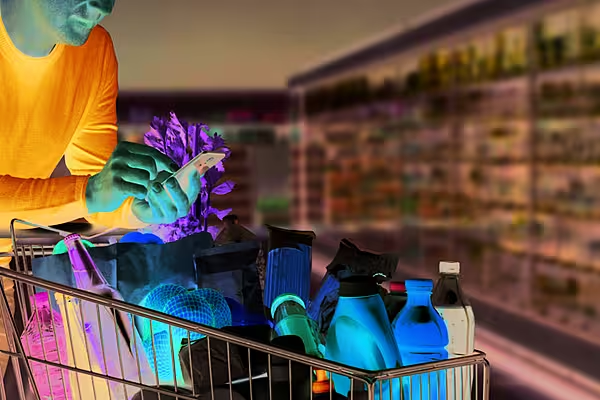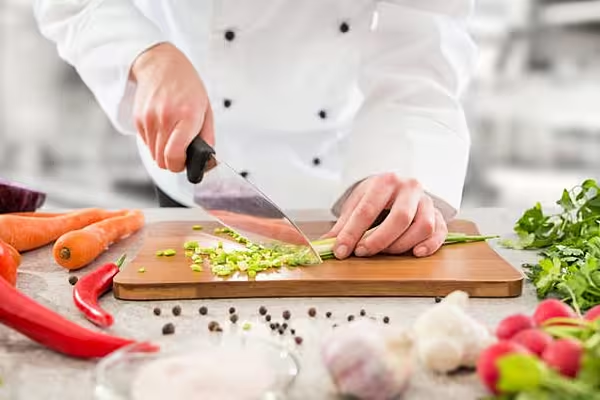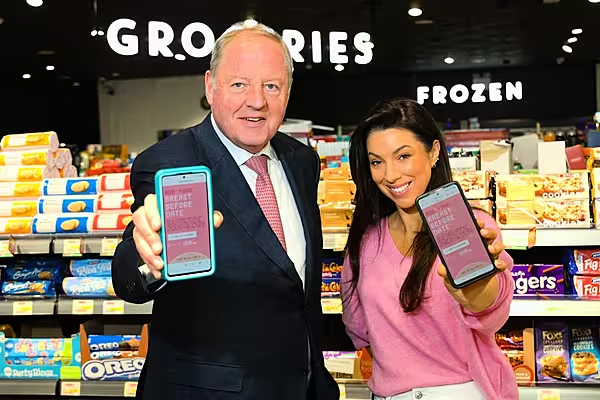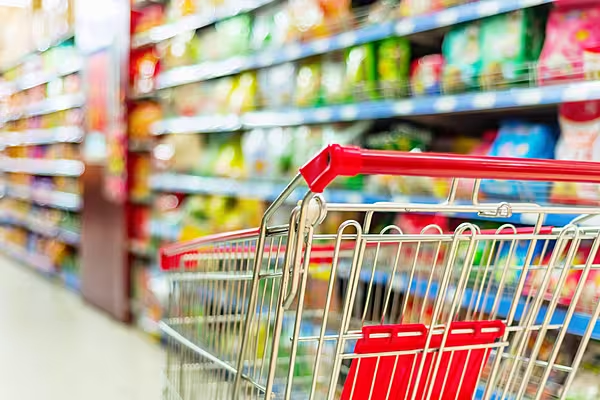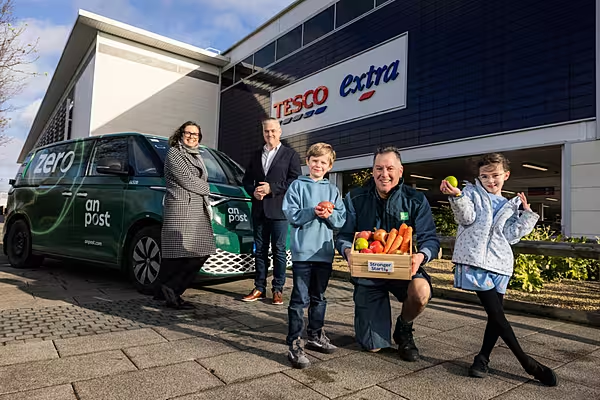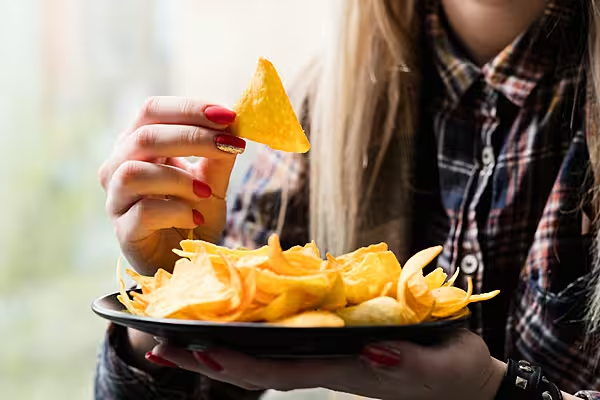At NIQ’s latest ‘state of the nation’ webinar for the grocery retail industry on 3 May, Ruth Lloyd-Evans, senior business insights manager with NIQ, looked at how consumer behaviours and shopper actions are playing out in the Irish FMCG industry. Maev Martin reports
Ruth’s assessment is based on data ending 26 March 2023 (Q1, 2023) and a consumer insight survey from 23 April.
Market spend for Q1 was up by 8.4% in value for multiples and convenience channels (excluding Dunnes Stores and discounters), compared to Q1 2022.
Price inflation is the biggest driver of increased value growth, with 13% price growth for total packaged grocery, excluding alcohol.
In other words, shoppers have to spend more to get less.
Volume (kg/litre) sales are declining more than unit or packs at a top-line aggregate level.
“This is indicative of an element of shrinkflation and also that shoppers are downsizing in pack size, although there are variations within categories,” she said.
“However, there are some green shoots emerging whereby volume declines are becoming less negative, and the Republic of Ireland FMCG market could see further price deflation as many retailers have cut costs on staples such as bread, milk, and butter.
"Many shoppers are questioning why food prices are still so high despite energy costs stabilising.
"However, there is a lag between producer input prices and the price we pay at tills in store.”
Based on NIQ survey data, Ruth says it is clear that shoppers feel financially pressured and are spending less on out-of-home and in-home entertainment, and on clothing.
“Consumers are telling us that they are spending more on the basics and essential meal components, and cutting back on more indulgent items such as confectionery, non-alcoholic and alcoholic beverages, and food-to-go,” she says.
“This trend will impact convenience channel retailers the most where sales of these categories is highest.
"However, there is an opportunity for brands and retailers to offer grocery alternatives to compensate for the trade off by catering for nights in, ‘fakeaways’, BBQs, and picnics.”
Saving strategies NIQ research reveals that consumers are using a range of strategies to help them save on their grocery bills, with planning purchases to avoid wasting food ranking as the number-one strategy.
Buying only what you need when you need it came in at number two, and this reflects the trend that NIQ are seeing in pack size downsizing.
Comparing price to find the best value increased in importance to number three this year, and shopping around also increased in importance, ranking at number four.
Shoppers are choosing different stores, buying smaller baskets, and shopping more frequently.
Buying more on promotion and purchasing retailer own label ranked at number five and number six, respectively.
“Shopping promotions declined in priority this year and this is likely driven by consumer perceptions of what is on deal,” said Ruth.
“The promotional landscape has become increasingly confusing for shoppers, as the discount that consumers are getting is not always transparent.
"The base price of goods has altered significantly due to cost price increases, so shoppers have lost their navigation price points.
"Promotions are a lever that needs to be engaged more effectively and it is a challenge for both brands and retailers to implement the right offering.
"Regarding retailer own label, there is a disparity between what shoppers claim they are doing and how they are behaving in stores. NIQ data tells us that shoppers are spending more on own label as growth is exceeding brands.”
Category Impact
When it comes to category volume growth, the NIQ data reveals that shoppers are cutting back in response to pricing.
“However, there are other category dynamics at play,” she said.
“For example, chilled food and pet food are experiencing the highest price inflation, but volume declines are not as great as in ambient as these are essentials.
"The dynamic between volume (kg/litre) and pack percentage change tells us that shoppers are more likely to go for bigger pack/better value on essentials but trade down for more indulgent items.
"Shoppers are looking for lower price points and an ability to save when it comes to more discretionary items.”
Price Elasticity
The NIQ consumer survey asked shoppers how they felt about price, pack size and quality.
Surprisingly, only 52% of shoppers believe that price rises are not justified – there was an expectation and acceptance of price increases.
87% of shoppers believe that pack sizes have reduced and 62% of shoppers believe that the quality of products has diminished.
“This perception of less value could be due to shoppers having made a switch to own label, which we know they are doing, and not being as happy with the product quality which is potentially good news for brands,” said Ruth.
“Categories with low price elasticity are less sensitive to price increase.
"As is often the case, the more impulsive and discretionary a category is, the more sensitive to price it is going to be.
"Manufacturers need to understand if their volume change is more influenced by their own price changes or competitor impact.
"Should you lead or follow when it comes to price? Are you more premium or mainstream, or niche? Is own label more prevalent in your category?
"It is vital for brands to optimise both regular price and promotional strategy.
"Brands need to know what the price thresholds and price gaps are relative to other products in the category and how they interact.
They need the right mechanic and right support in-store to make the most of the discount.”
Store Choice
In the NIQ consumer survey, shoppers ranked low prices as the number-one factor that most influences their choice of grocery store.
Shoppers are going where they can get value and essentials.
This year, they are more likely to compromise on range of product in favour of low prices on essentials.
Compared to the 2022 survey, the importance of loyalty card offers increased for consumers, with the importance of product range decreasing.
“Comparing channel shares in the latest 52 weeks to the latest 12 weeks, we can see a share shift in favour of discounters,” says Ruth.
“Shoppers are voting with their feet in search of the best value.
"While discounter price matching is a retailer strategy, some may argue that it reinforces the value they offer.
“For manufacturers looking for opportunities in each channel, it is important to know what shoppers are spending their money on by channel.
"Everyday essentials rank higher in discounters where there is more of a price differential.
"There is a challenge for the convenience channel retailer as they sell more discretionary products, but there are opportunities to cater for consumers trading off a night out with a night in.
"In 2023, we are seeing very regular online shoppers shopping the channel less frequently and this reflects global trends.”
Own Label & Promotions
Interestingly, NIQ data reveals that while own label is out-performing brands, own label price is accelerating faster than brands, so the price advantage is narrowing.
“Standard and economy own label ranges are leading the way, with the growth of premium lagging behind,” said Ruth.
“Brand differentiation is key and understanding where brands offer something unique.
"Brands need to look at their price structure across their pack offering and ensure that they have options for shoppers across the spectrum, and an entry level price offering from which shoppers might be willing to trade up to from own label.
“Taking the example of the baby category, and nappies in particular, the promotional strategy is pushing shoppers into own label.
"There has been less promotion and current promotional offers are not as deep as they were previously.
"There is no doubt that the promotional landscape has changed significantly over the past year.
"Promotions are back in almost all categories. Also, the percentage sold on promotion has decreased continuously since pre-pandemic times, coupled with less depth of deal.
"It is important to consider promotions from the shopper viewpoint – what is in-store activation calling out to them?
"Brands need to work with retailers to understand if their promotional strategy is helping them to meet their objectives, and make changes accordingly.”
Alcoholic Beverages
We are now more than one year on from the implementation of MUP, so NIQ asked shoppers how their alcohol purchasing has changed in the off-trade since the implementation of MUP.
“Shoppers told us that they are buying alcohol less often, less on impulse and more for special occasions,” said Ruth.
“The segregation of the off-licence means that shoppers must make a specific decision to enter the area.
"Almost 60% are saying that they are not switching to cheaper brands.
"The quality of what consumers are drinking is important.
"Alcohol is discretionary for the most part and shoppers are not reducing spend on groceries to offset price, therefore maximising seasonality and events is even more important.
“Changes in legislation and the pandemic had a significantly negative impact on the on-trade (CGA measurement services).
"Overall consumption of alcohol in the combined on-trade and off-trade has decreased since 2019 and has not recovered fully to pre-pandemic levels.”
Outlook For Retailers & Brands
Shoppers’ spending power will continue to be squeezed, while big brands have announced further price rises in 2023 and retailers are looking to price down.
“Strong relationships and clearly demonstrating the profit pool you generate will be key to navigating this successfully,” said Ruth.
“We looked at declines and switching to own label. Retailer above the line messaging to the consumer needs to be clear and concise, and ultimately drive retailer and brand loyalty.
"Brands need to think about pack offering and product tiering.
“Do you have a pack that responds to a price point that reflects immediate need? Should brands consider range extension at the lower end?
"Is the objective to drive shoppers to bigger packs and better value, or to offer savings on a per trip basis?
"How do you challenge behavioural changes where consumers have already traded down or out of the category altogether?
“When shoppers are not clear on the savings they are making they will compare price against other products in the category and own label.
"This year is going to be turbulent, so ensuring that your promotions are profitable right now is key."
© 2023 Checkout – your source for the latest Irish retail news. Article by Maev Martin. Click subscribe to sign up for the Checkout print edition.
